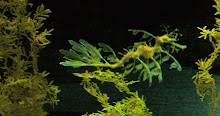In the past few weeks, the main science stories to break have been various tales of improbable creatures (all discovered, coincidentally, on April Fool’s day) and –in the UK, at least, ongoing coverage of the drug mephedrone and the large number of deaths attributable to it.
In many ways, the main mephedrone story is not so much about the science of this poorly-characterised designer drug (officially known as 4-methylmethcathinone) but the politics around it. However, when I read that mephedrone (or “miaow miaow” , as the tabloids are calling it) was a plant food, I got quite excited about the whole subject and the prospect of weaving it into a story about how potent plant-products are and how products that are used for plants can have potent effects on us, too.
The pharmacology of plants and their poisons (also known as ethnobotany) is one of my favourite subjects. I can bore for hours on the topic and, my internet search history and amazon purchases on the subject could probably put me on several government watch-lists. I think almost everyone goes through a phase of being fascinated with drugs- usually in their teenage years, admittedly, but there is something so universal and powerful about a tiny tablet being able to kill or cure a comparatively huge human (or make them see fairies or talk to trees in the case of the really interesting drugs). It would take a very un-curious person not to be amazed and to wonder at the mechanisms behind them- especially the reality-distorting drugs. At this point, a writer like Oliver Sachs would probably extrapolate to a deeper theory of mind or a philosophy of consciousness or understanding.

(Absinthe glass and spoon-Image by Eric Litton- reproduced under creative commons 2.5 licence- for image source and licence details, see- http://en.wikipedia.org/wiki/File:Absinthe-glass.jpg)
For my part, I’d like to talk about a book on toxicology that I was researching around this time last year. It was a difficult project- technically and in terms of keeping an even tone: how do you discuss the use of cyanide in the holocaust or Sarin on the Tokyo Underground in the same style as you relate Van Gough’s exploits with absinthe? In the end, I was very unhappy with the publishing contract I was offered and a number of other things and the book was shelved. None-the-less, I learnt quite a bit in the process. Some of those things were intricate mechanisms and metabolic pathways, but there were a lot of little pieces of trivia, too. For example, I discovered that, at the moment, over 100 plant-derived chemicals are used as drugs; these include all sorts of compounds from opiates like morphine and codeine (“opium” is actually a mixture of these two compounds) to substances like aspirin (originally derived from willow bark), digitalis (a heart drug that comes from foxglove plants) and curare (a natural muscle-relaxing compound used in poison darts that has been modified for use in the operating theatre).
It is not at all surprising, then, that compounds from plants can have powerful effects on people. It is a slight leap from this to realising that chemicals that mankind has synthesised for use on plants can have potent consequences for humans who eat them.
Had mephedrone actually been a plant food, I would then have talked about other plant foods and about herbicides. Paraquat- the herbicide would get special mention – I would have written about how toxic and- frankly- “evil” it is to anyone unfortunate enough to drink it. My soon-to-be sister-in-law once told me how she (an accident and emergency nurse) would love to show people contemplating a paracetamol (=acetaminorphen) overdose just how vile, protracted and distressing their demise would be, before they condemned themselves to such an end. Paraquat is worse.

Taxus baccata , European Yew. Image source: http://en.wikipedia.org/wiki/File:TXbaccata.jpg Creative commons licence 3.0. Photographer name not supplied. For more details, see http://en.wikipedia.org/wiki/File:TXbaccata.jpg.
Again, if mephedrone had actually been a plant food, I would then have segued into a discussion of some plant poisons- belladonna perhaps, wormwood or yew, all of which have the kind of colourful folkloric associations that make them easy to write about. In the event, however, the idea that mephedrone is plant food is completely false: it seems that it is simply labelled as such, to safeguard its dealers from legal problems and restrictions associated with supplying substances for consumption.

Catha edulis ("khat"/ "qat")Image source: wikipedia "Khat" entry. public domain image.
No doubt, in time, various interesting aspects of mephedrone’s pharmacology will be revealed, the weird quirks of its chemistry that make it simultaneously dangerous and fascinating. For the moment, we know that it behaves partly like amphetamines and partly like khat (also known as Qat) – a drug found in Catha edulis – an East-African and Arabian plant. Beyond this, for now, the mephedrone story in the media is about drug culture, needless deaths and politics and a very long way from science.
- Article (c) V Neblik. All rights reserved. Written 3/4/10. Nothing in this article should be construed as encouraging the use of drugs.









Hi Victoria
ReplyDeleteI referenced your article in a piece I wrote on Mephedrone here but I'm unsure as to whether I included the trackback correctly - http://samgolden.co.uk/blog/2010/04/4-methylmethcathinone-mephedrone-meow-meow-m-kat-the-facts/
great blog!
Sam
Hi, Sam,
ReplyDeletethanks for the trackback- that works fine. Thanks for the compliment and the link to your article.
See you around,
Best Wishes,
Victoria
hi victoria
ReplyDeletei invite you to find more info on khat at my new blog - talking only on khat.
great post and thanks again:)